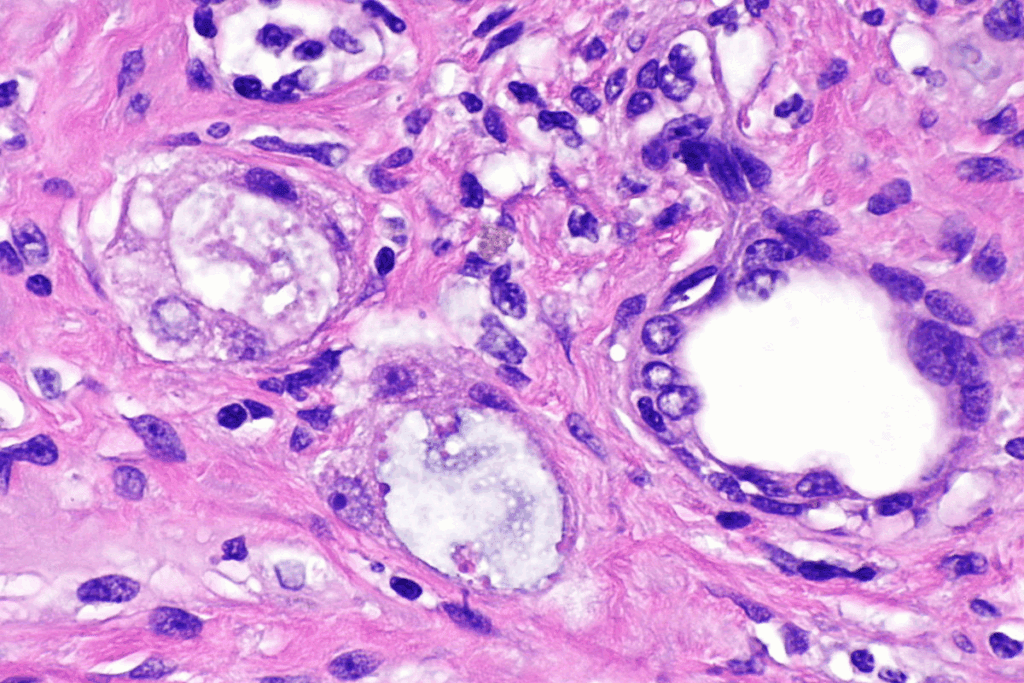Last Updated on October 31, 2025 by

Chronic Kidney Disease (CKD) affects millions worldwide. It’s important to understand the kidney disease stages or CKD stages to manage it well.
The KDIGO system helps sort CKD into stages. It looks at GFR levels and albuminuria. This helps doctors know how severe CKD is and plan treatments.
Knowing the five stages of CKD and GFR levels helps patients manage their disease. It can also improve their life quality.

Chronic Kidney Disease (CKD) is a serious health issue affecting millions globally. It involves a gradual loss of kidney function. We’ll look into what CKD is, how common it is, and why kidneys are vital for our health.
CKD means the kidneys can’t filter waste from the blood well. It’s a big concern worldwide, affecting 8% to 16% of people. Diabetes and hypertension are main causes, showing why managing these is key to prevent kidney damage.
CKD’s impact varies by population, with some groups at higher risk. This includes age, family history, and existing health issues. Knowing these risks helps in early detection and treatment.
Kidneys are essential for our health, filtering waste, excess water, and maintaining electrolyte levels. They also produce hormones and keep acid-base balance. The glomerular filtration rate (GFR) shows how well kidneys filter waste.
Healthy kidneys filter about half a cup of blood every minute. Impaired function leads to waste buildup, causing complications.
CKD gets worse over time if not managed. It’s divided into five stages based on GFR and damage level. Knowing the stage helps in choosing the right treatment and slowing disease progression.
CKD’s progressive nature highlights the need for regular checks and timely action. Managing underlying conditions and healthy living can slow disease progression and lower complication risks.

To manage CKD well, knowing how to measure kidney function is key. Kidney function tests check how well the kidneys filter waste.
The Glomerular Filtration Rate (GFR) shows how well the kidneys filter waste. It measures the volume of fluid filtered through the glomeruli per minute.
GFR is calculated using creatinine levels, age, sex, and race. This helps doctors understand the stage of CKD and track its progress.
Creatinine is a waste product from muscle breakdown. It’s filtered out by the kidneys. Doctors use serum creatinine levels to estimate GFR.
Other markers, like cystatin C, might be used too. They help get a clearer picture of kidney function.
“The use of creatinine as a filtration marker has limitations, and alternative markers like cystatin C are being explored for their potential to improve the accuracy of GFR estimation.”
The Albumin-to-Creatinine Ratio (ACR) test checks the urine for albumin and creatinine. It helps spot early kidney damage.
ACR is a key tool for diagnosing and tracking CKD. It shows how well the kidneys keep proteins in the body.
| ACR Category | Albumin-to-Creatinine Ratio (mg/g) | Description |
| A1 | <30 | Normal to mildly increased |
| A2 | 30-300 | Moderately increased |
| A3 | >300 | Severely increased |
Regular checks on kidney function are vital for managing CKD. How often tests are done depends on the CKD stage and individual risk factors.
Frequent monitoring helps make timely changes to treatment plans. This can slow CKD progression.
The KDIGO guidelines offer a detailed way to classify kidney disease. They use GFR and albuminuria levels. This system has greatly helped us understand and manage chronic kidney disease (CKD).
Kidney disease staging has changed a lot over the years. The KDIGO system is a big step forward. Before, we mainly used the glomerular filtration rate (GFR) to stage kidney disease. Now, we also look at albuminuria levels, giving us a clearer picture of CKD.
Key advancements in the KDIGO classification include:
The KDIGO system divides CKD into stages based on GFR and albuminuria levels. GFR ranges from G1 (normal) to G5 (kidney failure). Albuminuria levels go from A1 (normal to mildly increased) to A3 (severely increased).
| GFR Category | GFR Level (mL/min/1.73m2) | Albuminuria Category | Albumin-to-Creatinine Ratio (mg/g) |
| G1 | >90 | A1 | |
| G2 | 60-89 | A2 | 30-300 |
| G3a | 45-59 | A3 | >300 |
| G3b | 30-44 | ||
| G4 | 15-29 | ||
| G5 |
The KDIGO system helps doctors sort out the risk of CKD getting worse. It looks at both GFR and albuminuria levels. This way, doctors can spot high-risk patients and plan their care better.
Risk stratification is key for:
It’s important to know the stages of Chronic Kidney Disease (CKD) for better care. CKD stages go from G1, where kidneys are normal but damaged, to G5, showing kidney failure.
Patients with a GFR of 32 usually have CKD stage 3. This means their kidney function is slightly to moderately bad. It’s key to tell CKD 3a from 3b because it affects treatment and how often to check up.
Markers like creatinine levels and the albumin-to-creatinine ratio (ACR) help track kidney health. As CKD gets worse, symptoms get clearer, and treatment plans change.
Stage 6 kidney failure, or end-stage renal disease (ESRD), means dialysis or a kidney transplant is needed. Knowing about CKD stages helps doctors give better care and improve patient results.
CKD is divided into five stages, from G1 to G5. G1 is the least severe, and G5 means kidney failure.
Tests like GFR, creatinine levels, and albumin-to-creatinine ratio (ACR) measure kidney function. They help diagnose and manage CKD.
The KDIGO system uses GFR levels and albuminuria categories to categorize CKD. It helps understand the risk of disease progression and complications.
Symptoms vary by stage. Early stages might not show symptoms. But, advanced stages can cause fatigue, swelling, and changes in urination.
Testing and monitoring frequency depends on the disease stage and severity. Advanced stages need more frequent checks.
CKD stage 3 is split into 3A (GFR 45-59 mL/min/1.73m²) and 3B (GFR 30-44 mL/min/1.73m²). 3B shows more severe kidney impairment.
CKD is a progressive disease. Early detection and management can slow it down. But, reversal or cure is rare.
GFR levels are key in CKD staging. They show kidney function and help determine the disease stage and severity.
Albuminuria is important in CKD staging. It shows kidney damage and raises the risk of disease progression and complications.
Subscribe to our e-newsletter to stay informed about the latest innovations in the world of health and exclusive offers!